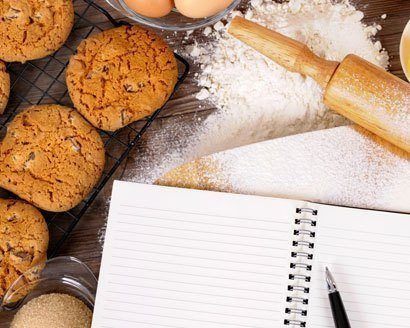How To Convert A Recipe
We've discussed how recipes can be a scary thing. Whether you're writing one, or quite frankly, reading one, there are often a lot of factors that can easily be overlooked — and ignoring them can be severely detrimental to your culinary success. Along with reading and writing recipes, converting recipes, whether it is ingredients or serving size, can be a trying task as well, and also has a huge impact in the outcome of your cooking.
Yeah, yeah, we know we always have Google, but oftentimes it's not a question of what the conversion is but what to convert to and how to convert it. While there are millions of different measurements to cover, these tables of basic conversions will help you adapt any recipe you're working with to the format you need — and most importantly — one that you understand.
U.S. Measurements
Sometimes we lose our 1-cup measurer or (shh) aren't using measuring tools at all, and are working off a spoon or plastic 8-ounce cup. This table will help you be certain that you're nailing the measurements in your recipe.
| 3 teaspoons | = | 1 tablespoon |
| 16 tablepsoons | = | 1 cup |
| 1 cup | = | 8 fluid ounces |
| 2 cups | = | 1 pint |
| 2 pints | = | 1 quart |
| 1 gallon | = | 4 quarts |
| 1 pound | = | 16 ounces |
Metric Conversions
It's happened before —your favorite British aunt sends her famous bangers-and-mash recipe and everything is in, ugh, metric measurements. Metric measurements can be easily understood by weight and volume, where there's milliliters and liters and kilograms and grams.
1 kilogram = 1,000 grams
1 liter = 1,000 milliliters
Now that you know the basics of the metric system, it's time to discuss converting to U.S. measurements. It's not as perfect as we would hope for, but here's a table that will be helpful in converting metric to U.S. measurements.
| 5 milliliters | = | 1 teaspoon |
| 15 milliliters | = | 1 tablespoon |
| 240 milliliters | = | 1 cup |
| 470 milliliters | = | 1 pint |
| 1 liter | ≈ | 4 cups |
| 1/2 kilogram | = | 1 pound |
Along with measurements, there's also the issue of converting temperatures from Celsius to Fahrenheit.These two simple math equations will help you convert Celsius to Fahrenheit, and vice versa.
C x 9/5 + 32 = F
F – 32 x 5/9 = C
Serving Size Conversions
Last but not least, another obstacle we've faced when converting recipes is the issue of serving size. In most cases, when you're changing the serving size of a recipe, you can use simple multiplication or division, where if you're serving a party of 8 instead of 4, you would double the ingredients, or vice versa. The only exception to this is with baking, where you would use bakers math to convert the ingredients. Because of the wide scope that topic covers, that's another article for another time.
Now that you have some general guidelines, it's time to put your recipe skills to use. We hope you finally have the courage to convert that recipe from your auntie in England and share it with The Daily Meal.
